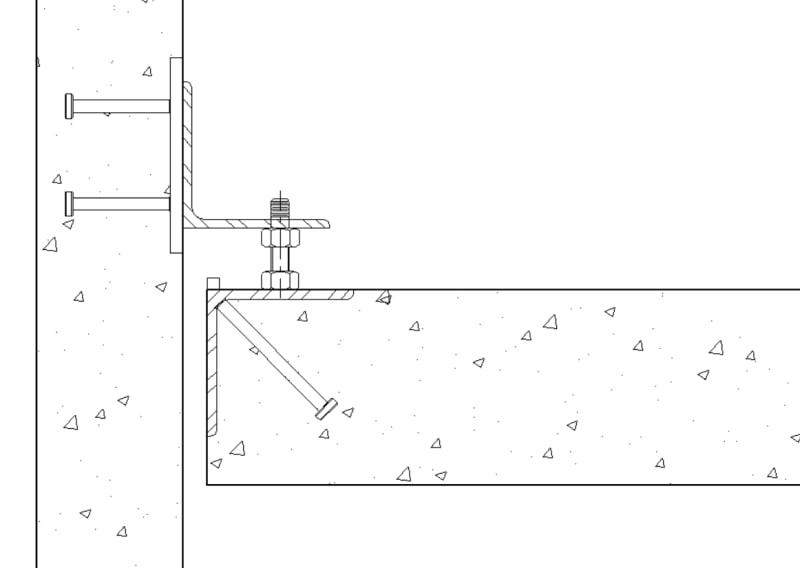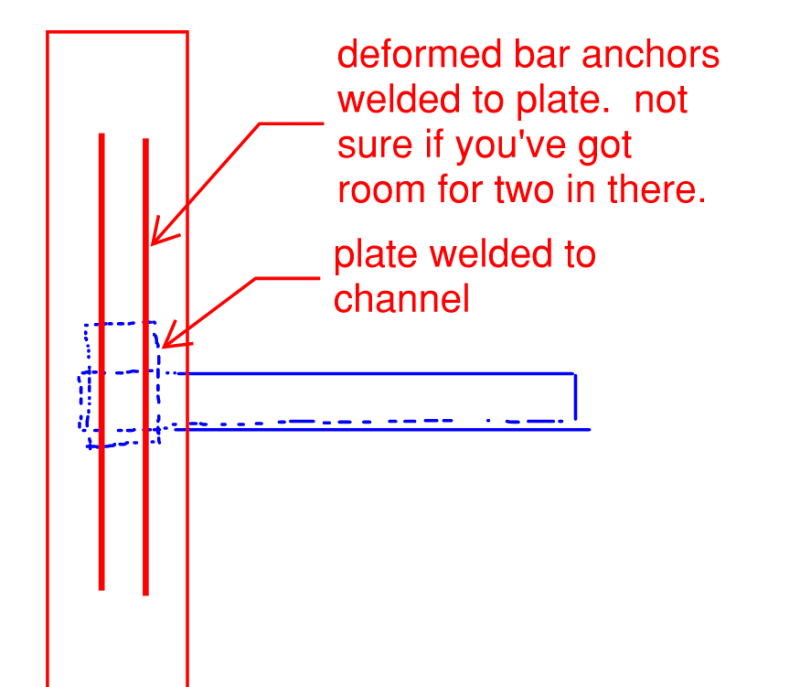CovertShear
Structural
Hey guys
I am designing a connection between a precast concrete parapet and a precast balcony slab on a 19 storey residential building.
The load bearing structure of the building is mostly monolithic concrete.
INPUT INFO:
- Parapet thickness 130 mm (5.11 in)
- Balcony slab thickness 190 mm (7.48 in)
MY DESIGN:
- Parapets will have a 900 mm (35.4 in) long UPE steel U-channel (poking out) concreted in during the precasting phase.
- Balcony slabs will 2 HALFEN HTE anchor channels (per connection) concreted in during the precasting phase.
- Two precast elements will be bolted on site with HALFEN T-bolts.
The steel U-channel, HALFEN anchor channels and T-bolts are designed for ULS combinations considering wind loads.
I Would love to hear what do you guys think about my design conceptually, because I have not done a connection like this before.
I am attaching a JPEG sketch
I am designing a connection between a precast concrete parapet and a precast balcony slab on a 19 storey residential building.
The load bearing structure of the building is mostly monolithic concrete.
INPUT INFO:
- Parapet thickness 130 mm (5.11 in)
- Balcony slab thickness 190 mm (7.48 in)
MY DESIGN:
- Parapets will have a 900 mm (35.4 in) long UPE steel U-channel (poking out) concreted in during the precasting phase.
- Balcony slabs will 2 HALFEN HTE anchor channels (per connection) concreted in during the precasting phase.
- Two precast elements will be bolted on site with HALFEN T-bolts.
The steel U-channel, HALFEN anchor channels and T-bolts are designed for ULS combinations considering wind loads.
I Would love to hear what do you guys think about my design conceptually, because I have not done a connection like this before.
I am attaching a JPEG sketch



